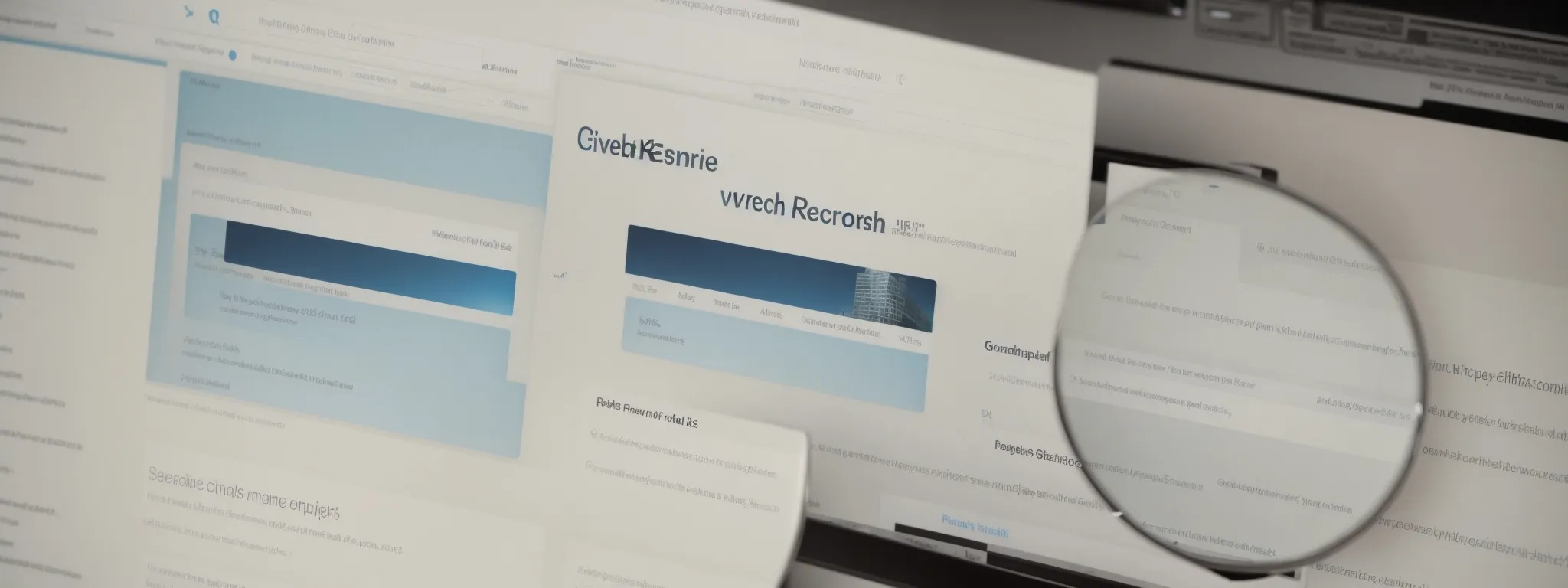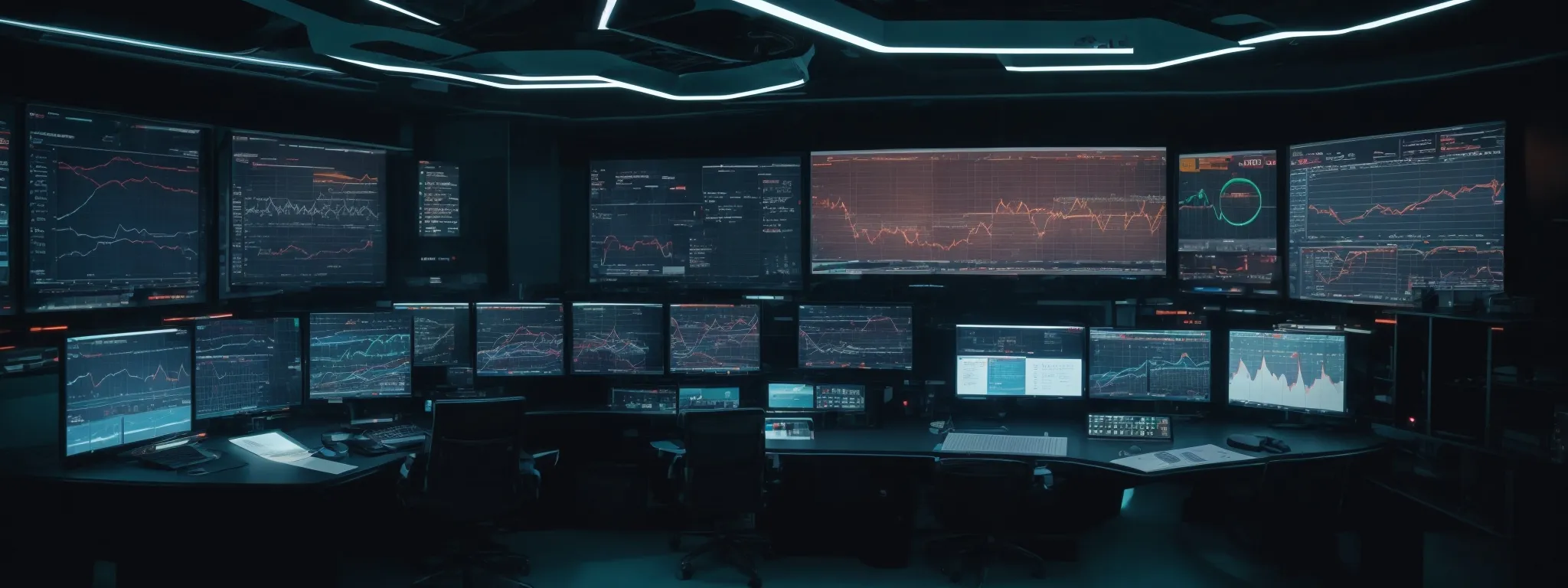SEM vs SEO vs PPC Defined: What’s the Difference
Understanding the Distinctions: SEM vs SEO vs PPC Explained In the intricate dance of digital marketing, understanding the nuances between search engine marketing (SEM), search engine optimization […]
Understanding the Distinctions: SEM vs SEO vs PPC Explained
In the intricate dance of digital marketing, understanding the nuances between search engine marketing (SEM), search engine optimization (SEO), and pay-per-click (PPC) can be the difference between a thriving online presence and one that falters.
While SEM acts as the overarching umbrella term, encompassing both SEO and PPC, the latter two serve distinct yet interconnected roles; SEO harnesses the potential of organic search results, and PPC capitalizes on targeted paid ads.
With the digital landscape continually evolving, a savvy marketer must discern not only what these terms mean but also how to effectively leverage each for maximum impact.
Keep reading to gain a clear understanding of how these components fit together and to harness their collective power for your marketing strategy.
Key Takeaways
- SEM Combines the Immediacy of PPC With the Sustained Benefits of SEO for Comprehensive Brand Visibility
- A Well-Calibrated SEO Strategy Results in Long-Term Digital Authority and Sustained Traffic Without Continuous Ad Spend
- Tactical Integration of PPC and SEO Optimizes Marketing Effectiveness and Aligns With Both Short-Term and Long-Term Business Goals
- LinkGraph’s SEO Services and SearchAtlas SEO Software Provide Strategic Synchronization for Maintaining a Commanding Online Presence
- Adapting to the Evolving Landscape of Technology and Consumer Behavior Is Essential for Effective SEM, SEO, and PPC Strategies
Defining the Scope: What SEM Entails

At the heart of a robust digital marketing strategy lies Search Engine Marketing (SEM), a term often used interchangeably with search engine optimization (SEO) and pay-per-click (PPC) advertising, yet distinctly different in scope and execution.
SEM encompasses a broader marketing framework that includes both SEO and paid search tactics.
As companies vie for visibility in an ever-competitive digital landscape, SEM emerges as instrumental, combining immediate visibility from paid campaigns with the enduring benefits of organic ranking improvements.
This foundational overview will elucidate the basics of SEM, highlight its role in the broader digital marketing ecosystem, and detail the key components that make up effective SEM strategies.
Basics of Search Engine Marketing
Within the realm of digital marketing, the basics of Search Engine Marketing (SEM) distinguish themselves by integrating various strategic elements aimed at enhancing a brand’s visibility online. Search Engine Marketing serves as an umbrella term that captures both the efforts of organic optimization and paid advertising tactics, presenting a comprehensive approach to conquering search engine result pages (SERPs).
By leveraging the dual strengths of SEM, businesses activate a dynamic marketing campaign that addresses immediate search visibility through PPC while simultaneously cultivating long-term authority with SEO practices. This multilayered strategy ensures that a company’s digital presence is not solely reliant upon ephemeral ad campaigns, but rather sustained through systematic optimization for organic search.
SEM’s Role in Digital Marketing
In the digital arena, SEM functions as the cornerstone of a strategic effort to drive traffic and enhance visibility across various online channels. It strategically positions a brand in front of target audiences, optimizing search ad placements and increasing the likelihood of conversion through both immediate and sustained exposure.
SEM’s contributions to digital marketing are multifaceted, not solely increasing a brand’s search results visibility but also fostering a nuanced understanding of audience behaviors. By analyzing data from both SEO and PPC efforts, marketers refine their campaigns, producing more relevant ad copy and more precisely targeted SEO content strategies that resonate with the client’s desired audience.
Key Components of SEM Strategies
SEM strategies thrive on a strong foundation of keyword research tools, which empower marketers to identify target keywords essential to the client’s business. Precision in keyword selection allows tailored search ads and SEO tactics to engage relevant searchers, thereby optimizing both paid search marketing and organic search visibility.
Another cornerstone of SEM is the alignment of SEO content strategy, including blog writing services and guest posting services, with search engine algorithms. This ensures high-quality score for PPC ads and superior ranking in organic search results, both of which are pivotal in capturing the right audience and improving overall campaign performance.
SEO Uncovered: Optimizing for Organic Search

In the intricate web of digital marketing, Search Engine Optimization (SEO) commands a pivotal role, meticulously shaping search rankings and spearheading the drive towards enhanced online visibility.
This process of optimization goes beyond mere placement on a search engine result page; it refines a website’s relevance and authority, ensuring it resonates with both search engines and the target audience alike.
Within this subsection, experts shed light on how SEO’s deep-rooted influence on search rankings fosters a robust digital footprint, the strategic advantages a strong SEO framework bestows upon businesses, and the critical SEO practices essential for any business aiming to thrive in today’s hyper-competitive online arena.
How SEO Influences Search Rankings
SEO exerts a profound impact on search rankings by meticulously tuning the various facets of a website to the preferences of search engine algorithms. It is through this fine-tuning that a website’s relevance for specific target keywords is maximized, enhancing its likelihood of outranking competitors on the search results page.
Additionally, SEO leverages on-page optimization alongside the construction of a credible backlink profile to establish a website’s authority. This holistic approach not only escalates a site’s position in organic search results but also fosters trust with searchers, translating into increased website traffic and improved user engagement.
The Benefits of a Strong SEO Strategy
A robust SEO strategy serves as a catalyst for long-term growth, imbuing a brand’s online presence with durability and resilience against the tides of digital change. By cultivating organic search prowess, companies reap the reward of sustained traffic, circumventing the necessity for continuous ad spend and establishing a reliable foundation for digital authority.
Implementing a strong SEO framework often translates into elevated brand recognition and consumer trust, which are essential in nurturing customer loyalty. As a website ascends the ranks of organic search results, the increased visibility can result in a higher conversion rate, turning visitors into buyers and bolstering a company’s return on investment.
Essential SEO Practices for Businesses
Businesses, intent on solidifying their digital footprint, must prioritize on-page SEO services that meticulously sculpt website content to meet the nuanced criteria of search engine algorithms. Elevating the visibility and relevance of web pages, these services calibrate site structure, enrich content with target keywords while ensuring the user experience remains paramount.
Moreover, white label SEO and white label link building emerge as quintessential for companies looking to amplify their SEO capabilities without diluting their brand identity. These discrete solutions allow businesses to harness specialized expertise and advanced resources such as LinkGraph’s SEO services and SearchAtlas SEO software, fostering a robust backlink profile and reinforcing their market position.
- On-page optimization for enhanced content relevance and user engagement
- White label solutions offering specialized expertise and scalable resources
- Methodical construction of a credible backlink profile through free backlink analysis
- Strategic local SEO services to target geographically relevant searchers
- Keyword-optimized SEO content strategies, underpinning textual and multimedia elements
PPC Explained: Paying for Your Place

The strategic arena of digital marketing introduces Pay-Per-Click (PPC) advertising as a model granting businesses the power to achieve instantaneous visibility in the overcrowded digital marketplace.
Unlike the gradual ascent provided by SEO, PPC offers a distinctive advantage by presenting a brand directly to potential customers at the top of search engine results, in exchange for a fee each time the ad is clicked.
Such immediacy can lead to rapid increases in traffic and conversions, but understanding the mechanics, assessing the instant impact on search engine marketing campaigns, and measuring the ROI of PPC investments are critical steps that determine the ultimate success of paid advertising initiatives.
Understanding PPC Mechanics
Unraveling the mechanics of PPC begins with grasping its core principle: advertisers bid on keywords relevant to their target market, and pay a fee each time their ad is clicked. This aligns the advertisers’ cost directly with the engagement their ads receive, fostering a transparent and performance-based environment within the search engine marketing landscape.
The intricacies of PPC also involve understanding the quality score—a metric that influences both the cost and placement of ads. Search engines determine this score based on factors such as ad relevance, click-through rates, and landing page quality:
| Quality Score Component | Impact on PPC |
|---|---|
| Ad Relevance | Determines how closely an ad aligns with a searcher’s intent |
| Click-Through Rate (CTR) | Acts as an indicator of ad effectiveness in capturing user interest |
| Landing Page Quality | Assesses the user experience and pertinence of content post-click |
The Instant Impact of PPC Campaigns
The instant impact of PPC campaigns hinges on their ability to propel a brand to the forefront of search engine results with remarkable speed. Upon activation, these campaigns deliver immediate brand visibility, attracting potential customers precisely at the moment of their search intent.
With PPC, the journey from obscurity to prominence is succinct, bypassing the slow climb typically associated with organic reach. The capability to target specific user demographics or behaviors means companies swiftly engage with segments of their audience who are actively seeking the products or services they offer:
- Immediate brand visibility upon campaign activation
- Direct engagement with audiences at the peak of their search intent
- Swift market penetration by targeting specific demographics or user behaviors
The targeted nature of PPC ensures that advertising spend is allocated efficiently, with each click representing a potential customer with a high intent to purchase. As such, businesses experience a direct and measurable spike in traffic and conversions, aligning marketing expenditure with tangible results.
Calculating the ROI of PPC Advertising
When businesses invest in PPC advertising, they must be attentive to the return on investment (ROI) which serves as a critical performance indicator. This calculation involves comparing the costs incurred for the ads against the revenue generated from conversions, providing an objective measure of the campaign’s financial effectiveness.
ROI analysis for PPC campaigns goes beyond surface-level metrics to offer a granular view of profitability. It accounts for factors like average cost-per-click (CPC) and conversion rates, empowering businesses to make data-driven decisions in optimizing their ad spend for maximum impact and ROI optimization.
The Symbiotic Relationship of SEM and SEO

In the complex tapestry of online marketing, the interplay between Search Engine Marketing (SEM) and Search Engine Optimization (SEO) forms a dynamic ecosystem where both disciplines complement one another.
While SEM comprises the broad-strokes approach of gaining visibility through paid and organic methods, SEO is dedicated to refining a website’s presence to achieve higher rankings organically.
Together, they forge an alliance that leverages the strengths of one to amplify the effectiveness of the other.
Balancing these paid and organic efforts entails a strategic choreography that, when executed with precision, maximizes visibility and solidifies a brand’s prominence in the vast digital landscape.
How SEM and SEO Work Together
The concerted application of SEM and SEO is not mere juxtaposition but rather a strategic union, enhancing the overall digital marketing efficacy. SEM’s paid search components can yield rapid brand awareness and traffic inflow, while SEO efforts work to cement the brand’s organic search credibility, creating a lasting impact.
Together, SEM’s swift ascendancy in the market and SEO’s contribution to establishing domain authority form a formidable tandem, optimizing both immediate outcomes and sustainable growth. This union is underscored by a meticulous evaluation and implementation of data-driven insights:
- SEM quickly catapults a brand into the search spotlight, while SEO fortifies its market stance.
- Data harnessed from SEM campaigns informs the SEO strategy, ensuring relevancy and effectiveness.
- SEO’s enhancement of website content and structure supports SEM endeavors by improving quality score and user experience.
Balancing Paid and Organic Efforts
Balancing paid and organic efforts necessitates a nuanced understanding of each method’s unique advantages and the timing of their deployment. Paid search, characterized by PPC, offers immediate exposure and direct traffic funnels while SEO cultivates a foundational online presence that accrues value and visibility over time.
Effective digital marketing strategies pivot between leveraging the quick wins of PPC advertising and the gradual but potent ascent through organic SEO efforts. Recognizing the moments to capitalize on PPC efficiencies and when to invest in the compounding effects of SEO exemplifies the art of strategic marketing balance.
| Marketing Approach | Advantages | Tactical Use |
|---|---|---|
| PPC | Instant visibility, targeted approach | Quick market entry, time-sensitive promotions |
| SEO | Long-term growth, organic credibility | Sustained visibility, developing domain authority |
Integrated Strategies for Maximum Visibility
For businesses seeking to establish dominance within the digital marketplace, integrated strategies that marry SEM and SEO provide a comprehensive format for achieving maximum visibility. LinkGraph’s SEO services are pivotal in creating such harmony, ensuring that the immediate gains from PPC efforts are seamlessly supported by organic growth derived from SEO.
These integrated approaches are underpinned by the use of SearchAtlas SEO software, which facilitates a fusion of quality and efficiency:
- Analysis-driven decision making guides precision targeting and resource allocation.
- Real-time data from SEM informs SEO adjustments for ongoing relevance and performance.
- Content created is optimized for organic discovery while reinforcing paid search initiatives.
By synchronizing the strategies, LinkGraph ensures clients not only attain but also maintain a commanding online presence, effectively reaching their target audience through expertly crafted search engine marketing campaigns. This strategic integration results in a compelling digital narrative that captivates and converts.
When to Opt for PPC Within Your SEM Strategy

In a landscape where establishing a digital presence is akin to navigating intricate crossroads, the precise timing of Pay-Per-Click (PPC) advertising within a Search Engine Marketing (SEM) strategy often serves as a deciding factor in a campaign’s success.
It stands unique, a lever businesses can pull to summon immediate market engagement, complementing the long-game of organic growth fostered through SEO.
The ensuing discourse will dissect the opportune moments for integrating PPC, its pivotal role in launching laser-focused campaigns that captivate the intended audience, and the craft involved in devising PPC ads that resonate and spur action among potential customers.
Identifying the Right Time for PPC
Identifying the optimal moment to integrate PPC into a search engine marketing strategy is crucial for businesses aiming to amplify their digital footprint. The decision largely hinges on specific objectives such as driving traffic during a product launch, targeting a campaign to coincide with a special promotion, or filling in visibility gaps while SEO initiatives gain traction.
- Product launches benefit from the immediate exposure PPC provides, capturing audience interest when buzz is highest.
- Special promotions or sales periods are prime times for PPC, as it allows businesses to reach customers actively searching for deals.
- SEO efforts, while powerful, may take time to yield results; PPC can offer a visibility boost during this growth period.
Utilizing PPC is particularly advantageous when a swift analysis of market responsiveness is needed. It delivers speedy insights into the effectiveness of various marketing tactics, enabling businesses to pivot quickly and fine-tune their overall strategy for peak performance and engagement with their target audience.
PPC’s Role in Targeted Campaigns
PPC’s strategic utility shines in its facilitation of targeted campaigns that reach consumers with precision. By directly addressing the search queries of potential buyers, LinkGraph’s suite of ad campaign services enables a level of specificity that ensures a brand’s message resonates with an audience poised for conversion.
Further enhancing the efficiency of digital advertising, LinkGraph’s PPC management deftly tailors the geographic and demographic segments of a campaign, optimizing limited ad spending for maximum impact. This meticulous targeting ensures that clients’ advertising efforts are not wasted on uninterested parties, but rather funneled towards prospects with demonstrated interest in their offerings.
Creating Effective PPC Ads for Your Audience
Crafting effective PPC ads necessitates an acute understanding of the audience’s needs and motivations. LinkGraph’s tailored ad copy ensures that each PPC ad strikes a chord with the intended demographic, using language and emotional triggers that are known to drive engagement and click-through rates, leading to a higher quality score and successful conversions.
Attention to detail in PPC ad creation is central to the services provided by LinkGraph, where the synergy of compelling visuals and relevant messages results in ads that not only stand out on the search results page but also embody the essence of the client’s brand and value proposition. This focus on relevancy and engagement is key to connecting with users and fostering tangible outcomes from paid search efforts.
Measuring Success: SEO vs PPC Metrics

In the confluence of search engine strategies, discerning the efficacy of various approaches is paramount.
Metrics and analytics serve as crucial navigational tools, providing insights and benchmarks to evaluate the performance of Search Engine Optimization (SEO) and Pay-Per-Click (PPC) initiatives.
The upcoming exploration into Key Performance Indicators for SEO, Tracking and Analyzing PPC Data, and Adjusting Campaigns Based on Analytics equips both seasoned marketers and emerging businesses with a keen ability to quantify successes, identify areas for enhancement, and make informed decisions that steer their digital footprint towards their desired outcomes.
Key Performance Indicators for SEO
As digital landscapes become increasingly competitive, businesses seek to track the performance of their SEO efforts through Key Performance Indicators (KPIs). These metrics illuminate a website’s effectiveness in organic search, encompassing various dimensions from ranking positions to user engagement levels.
Determining the vitality of an SEO campaign rests on the accurate interpretation of KPIs such as search rankings for target keywords, organic traffic volume, and the bounce rate of visitors: these provide a quantifiable snapshot of SEO health and progress.
- Search rankings reveal the visibility of pages in search engine results, indicating potential reach to the audience.
- Organic traffic volume measures the number of users arriving from search engines, offering insight into SEO efforts’ success.
- Bounce rate gauges user engagement by identifying the percentage of visitors who navigate away after viewing only one page.
Tracking and Analyzing PPC Data
Efficiently tracking and analyzing PPC data is a tactical imperative for advertisers aiming to optimize their spending and impact. Central to this process is LinkGraph’s expertise in utilizing advanced analytics to dissect campaign performance, enabling detailed insights into click-through rates, cost-per-acquisition, and ad engagement.
Through meticulous analysis, LinkGraph helps clients distill the essence of their PPC data, identifying trends and outliers that inform strategic adjustments in real-time. This commitment to data-driven decision-making elevates PPC campaigns, producing a higher return on ad spend and ensuring that every dollar invested works harder to achieve the client’s marketing objectives.
Adjusting Campaigns Based on Analytics
Analytics deliver a powerful pulse on the health of both SEO and PPC campaigns, enabling marketers to refine their strategies with agility and precision. Armed with data insights, LinkGraph advises clients when it’s time to recalibrate their tactics, ensuring that the trajectory of their marketing efforts stays aligned with evolving search patterns and consumer behavior.
The feedback loop provided by campaign analytics is indispensable for maintaining the relevance and efficacy of digital marketing efforts. Utilizing comprehensive reports, LinkGraph’s client campaigns undergo continual optimization: from bid adjustments in PPC to content tweaks in SEO, every action is data-informed and strategically executed to enhance performance.
| SEO Metric | PPC Metric | Purpose of Analysis |
|---|---|---|
| Organic Traffic Volume | Click-Through Rate (CTR) | To gauge campaign effectiveness in attracting relevant visitors |
| Keyword Ranking Positions | Conversion Rate | To understand visibility and actual performance against competitive benchmarks |
| Backlink Profile Growth | Cost-Per-Acquisition (CPA) | To assess the expansion of domain influence and cost efficiency of customer acquisition |
SEO and PPC: Tailoring Strategies to Business Needs

Dissecting the comprehensive realm of digital marketing reveals the nuanced differences between Search Engine Marketing (SEM), Search Engine Optimization (SEO), and Pay-Per-Click (PPC) advertising.
Each element plays a distinct role in a holistic marketing strategy, yet understanding how to dovetail them effectively remains a strategic imperative for businesses.
As companies chart their course through the digital marketplace, aligning SEO and PPC approaches with overarching marketing objectives becomes crucial.
This encompasses judicious budget allocation, balancing the pursuit of immediate results with the vision for sustained growth, and tailoring strategies that resonate with an entity’s long-term aspirations versus its short-term imperatives.
Engaging in this fine calibration ensures the marketing approach adopted is not only congruous with the business’s goals but also optimizes the investment for maximum efficacy.
Aligning Strategies With Marketing Objectives
Aligning SEO and PPC strategies with marketing objectives involves a meticulous analysis of a company’s goals and market position. It is a process that demands a clear understanding of the desired outcomes, whether it’s to increase brand awareness, drive sales, or capture leads: each aim dictates a distinct approach in how the blend of SEO and PPC tactics should be implemented.
| Marketing Objective | SEO Focus | PPC Focus |
|---|---|---|
| Brand Awareness | Keyword-rich content creation, strategic meta descriptions | High-impression, broad match ads |
| Sales Increase | Product-focused pages with strong call to actions | Conversion-optimized ads with clear unique selling propositions |
| Lead Capture | Content marketing to inform and engage potential customers | Targeted ads leading to optimized landing pages |
The strategic deployment of LinkGraph’s SEO services and PPC advertising must align with a company’s unique target audience and competitive landscape. For instance, a new market entrant might leverage aggressive PPC campaigns to establish initial visibility, while an established brand may concentrate on SEO to fortify its domain authority and organic reach.
Budget Considerations in SEO and PPC
One must consider that the allocation of funds towards SEO and PPC demonstrates a trade-off between immediate visibility and long-term value. While PPC demands a regular budget to consistently appear in front of prospective customers, investments in SEO compound over time, potentially reducing the need for high ongoing ad expenditures.
Careful budget planning ensures that businesses optimize their marketing investments, directing funds towards PPC to capitalize on time-sensitive opportunities or towards SEO when building a foundation for sustainable organic growth. LinkGraph’s SEO services provide a strategic analysis, advising clients on the most prudent allocation of their marketing budget to achieve desired outcomes efficiently.
Long-Term vs Short-Term Digital Marketing Goals
Distinguishing between long-term and short-term digital marketing goals is essential for crafting a strategy that aligns with the growth trajectory of a business. Long-term goals often center around building brand authority, developing a loyal consumer base, and achieving a significant foothold in organic search rankings, culminating in a steady stream of targeted traffic over time.
Conversely, the focus of short-term digital marketing goals is to generate immediate results and quick returns on investment. Companies may prioritize rapid customer acquisition, increased sales for a particular quarter, or immediate visibility for a new product launch, utilizing targeted PPC campaigns to meet these expedited objectives.
Future Trends in SEM, SEO, and PPC

The digital marketing domain perpetually evolves, with SEM, SEO, and PPC at the vanguard of this transformation.
As marketers and businesses peer into the horizon of opportunity, they are met with the challenge of not only anticipating but adeptly responding to the shifts in search algorithms, advertising landscapes, and consumer behaviors.
Mastery in these domains hinges on the ability to discern the subtleties of change and to navigate advancements in technology with strategic agility.
Embrace the notions of predictive analysis and adaptive strategy, which shall be the guiding stars in the firmament of search engine marketing’s future.
This subsection lays the groundwork for exploring the anticipated changes poised to reshape the approaches of SEM, SEO, and PPC.
Predicting Changes in Search Algorithms
The search landscape is subject to constant evolution, with search engine algorithms adapting to new technologies and user behaviors. Professionals anticipate that machine learning and user intent will increasingly drive these changes, prompting SEO specialists to adopt more sophisticated and predictive analytics in their optimization strategies.
As a response, LinkGraph remains vigilant, adapting its strategy to algorithmic shifts by enhancing its SearchAtlas SEO software. Their approach ensures clients’ websites remain not only compliant with current best practices but also ahead of the curve, as search engines refine the mechanisms governing search visibility and ranking.
The Evolving Landscape of Digital Advertising
The digital advertising panorama is in a constant state of flux, influenced by emerging technologies and changing consumer habits. These shifts necessitate advertisers to remain agile, embracing new platforms and formats, from video ads to interactive display ad experiences to maintain consumer engagement and campaign efficacy.
Advertisers are pressed to rethink strategies within this dynamic environment, where traditional models yield to programmatic advertising and data-driven targeting. Addressing user privacy concerns while maintaining personalization and relevancy forms the crux of modern digital advertising challenges:
- Integration of programmatic ad buying with real-time data analytics.
- Adaptation of advertising strategies to comply with privacy regulations.
- Employment of novel ad formats that complement user experience.
Adapting to Consumer Behavior and Technology Advances
Understanding consumer behavior and technological advancements is pivotal in navigating the modernity of SEM, SEO, and PPC. As digital consumption patterns shift and new technologies emerge, marketing strategies must evolve to remain effective and relevant in engaging the target audience.
LinkGraph capitalizes on this imperative, continually refining its SEO services and SEM methodologies to align with the latest consumer trends and technology developments. Their ability to adapt ensures that marketing efforts resonate deeply with an audience whose expectations and behaviors are ever-changing.
| Consumer Trend | Technological Advance | LinkGraph’s Adaptation |
|---|---|---|
| Increased use of mobile devices for search | Advancements in mobile UX/UI design | Optimizing websites for mobile-first indexing and user experience |
| Growing expectation for personalized content | AI-driven content customization | Implementing AI tools to tailor SEO content strategies |
Conclusion
In conclusion, navigating the distinctions between SEM, SEO, and PPC is critical for digital marketing success.
SEM serves as a comprehensive strategy that encompasses the immediate impact of PPC’s paid visibility and the enduring growth afforded by SEO’s organic ranking improvement.
A well-rounded SEM approach can effectively balance rapid brand exposure provided by PPC with the credibility and sustainable traffic generated through SEO.
Companies must be strategic in their use of PPC to target specific audiences and achieve short-term goals, while continuously investing in SEO for long-term market dominance.
Thorough understanding and adept leveraging of these interconnected disciplines allow businesses to maximize online visibility, cater to evolving consumer behaviors, and ensure a solid return on their marketing investments.
This pivotal insight into SEM vs SEO vs PPC not only sharpens a company’s competitive edge but also positions it to adeptly adapt to future trends in the ever-changing digital landscape.














































































